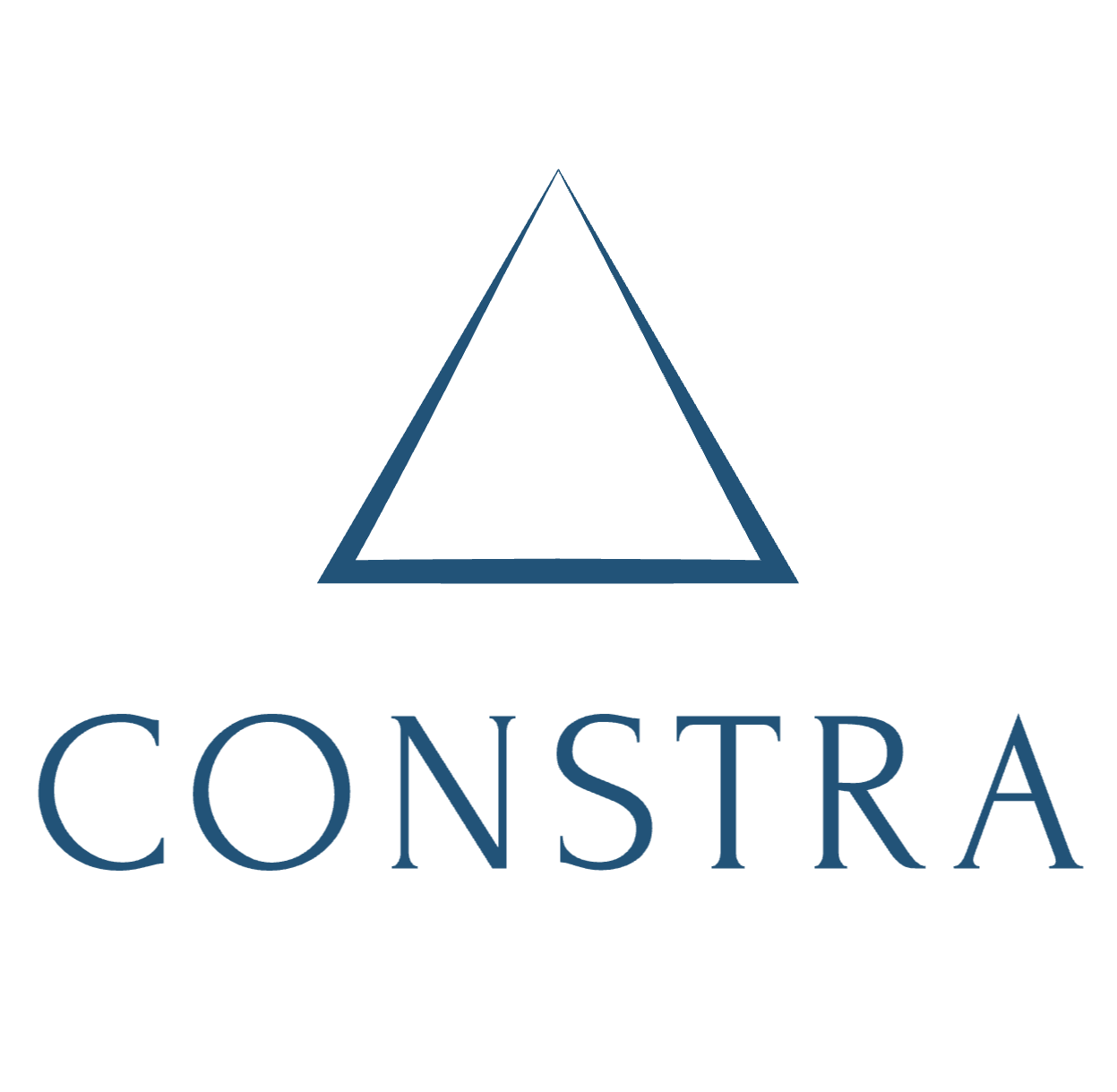Work Breakdown Structure (WBS) is a hierarchical decomposition of a project into smaller, more manageable components or work trades. It is a tool that is widely used in construction project management to organize and plan a project, as well as to monitor and control project progress, and for creating project documentation like project charter, project plan, and project schedule.

“ CONSTRA's WBS enables real-time progress updates and instant reports for accurate project tracking and prompt decision-making for better project outcomes and effective construction management.
Case Study: Construction of a High-Rise Office Building
A construction company was tasked with building a high-rise office building in a bustling urban area. The project involved multiple stakeholders, complex engineering requirements, and a tight timeline.
Use of CONSTRA’s Work Breakdown Structure:
Planning and Organization: The project manager utilized CONSTRA’s WBS to break down the project into manageable components. They identified major work packages such as foundation, structural framework, plumbing, electrical systems, interior finishing, and exterior landscaping. Each work package was further decomposed into smaller tasks and sub-tasks.
Cost Estimation and Budgeting: The WBS allowed the project manager to assign cost estimates to each task and sub-task. This facilitated accurate budgeting, enabling the company to procure the necessary resources and materials within the allocated budget.
Resource Allocation: The WBS helped in efficient resource allocation. For example, during the foundation phase, resources such as excavation equipment, concrete suppliers, and skilled labor were allocated based on the specific tasks outlined in the WBS. This ensured that the right resources were available at the right time, minimizing delays.
Project Tracking and Progress Monitoring: The project manager used the CONSTRA’s WBS to track the progress of each task and sub-task. Regular progress reports were automatically generated by comparing the actual completion dates against the planned schedule. This allowed for timely identification of any deviations and facilitated proactive measures to keep the project on track.
Risk Management: The WBS aided in risk management by highlighting potential risks associated with each task and sub-task. For instance, the installation of electrical systems had risks related to compatibility issues and safety standards. By identifying these risks early on, the project team could develop appropriate mitigation strategies and allocate resources accordingly.
Communication and Stakeholder Engagement: The WBS served as a visual representation of the project structure, making it easier to communicate project objectives, timelines, and deliverables to stakeholders. Regular meetings and progress updates were conducted based on the WBS, ensuring effective collaboration and alignment among the project team and stakeholders.
Quality Control: The WBS allowed for the definition of quality requirements at the task and sub-task level. For example, interior finishing tasks had specific quality standards for materials and workmanship. By integrating quality checkpoints within the WBS, the project team could ensure that the final deliverables met the desired level of quality.
Change Management: As the project progressed, changes in design or scope were inevitable. The WBS provided a structured framework to evaluate the impact of changes on specific tasks and sub-tasks. This facilitated effective change management, allowing the project team to assess the implications, adjust project plans, and communicate the changes to stakeholders.
This case study demonstrates how the implementation of CONSTRA’s WBS in the construction of a high-rise office building enabled effective planning, resource management, progress monitoring, risk mitigation, and stakeholder engagement. It showcases the practical benefits of using CONSTRA’s WBS as a project management tool in complex construction projects.
Management Problems without Work Breakdown Structure
Not using a Work Breakdown Structure (WBS) in your construction project management leads to a number of problems that have a significant impact on your business:
1. Lack of organization:
Without a WBS, it is difficult to keep track of the various tasks and subtasks that need to be completed, leading to confusion and delays.
Business Impact:
- Delayed Completion: Without a WBS, to track progress and identify issues, projects experience delays in completion, leading to lost revenue and potential penalties for missed deadlines.
- Customer Dissatisfaction: With delayed project completion, it is difficult to deliver the project on time and budget, leading to customer dissatisfaction.
2. Difficulty in estimating costs:
A WBS provides a clear structure for breaking down the project into smaller, more manageable tasks, making it easier to estimate costs. Without a WBS, it is difficult to accurately estimate the cost of a project.
Business Impact:
- Increased Costs: Without a clear structure and accurate cost estimates, projects may go over budget, leading to increased costs for the business.
3. Difficulty in tracking progress:
A WBS allows you to track the progress of each individual task, making it easier to identify and address any issues that arise. Without a WBS, it is difficult to accurately track progress and ensure that the project stays on schedule.
Business Impact:
- Delayed Completion: Without a WBS, to track progress and identify issues, projects experience delays in completion, leading to lost revenue and potential penalties for missed deadlines.
- Customer Dissatisfaction: With delayed project completion, it is difficult to deliver the project on time and budget, leading to customer dissatisfaction.
4. Lack of accountability:
A WBS allows you to assign specific tasks to specific individuals, making it clear who is responsible for what. Without a WBS, it is difficult to determine who is responsible for different aspects of the project, leading to a lack of accountability.
Business Impact:
- Low Productivity and Performance: Without a WBS, it is difficult to assign responsibility for specific tasks, leading to a lack of accountability, which leads to a lack of productivity and poor performance.
5. Difficulty in identifying and addressing risks:
A WBS allows you to identify and address risks at the task level, making it easier to mitigate or avoid them. Without a WBS, it is difficult to identify and address risks, leading to increased risk and uncertainty.
Business Impact:
- Negative Business Reputation: Without a clear structure to organize and coordinate tasks, the quality of work may suffer, leading to increased costs to fix mistakes and potential damage to the business's reputation.

“ CONSTRA's Work Breakdown Structure (WBS) provides a comprehensive framework for managing construction projects. One of its notable advantages is the ability to update project progress and work trades based on the scheduled timeline. This means that as tasks and subtasks are completed, project managers and team members can easily record the progress in CONSTRA, aligning it with the planned schedule.
By capturing progress updates in real-time, CONSTRA ensures that project stakeholders have accurate and up-to-date information about the project's status. This allows for better decision-making, as any deviations or delays from the original plan can be promptly identified and addressed. “
Utilizing CONSTRA's WBS for Effective Construction Project Management
CONSTRA's Work Breakdown Structure (WBS) is particularly helpful in remote construction project management by providing a clear and detailed picture of the project, even when team members are working remotely.
Some ways in which CONSTRA's WBS helps in remote construction project management include:
1. Better Organization and Planning:
WBS helps construction professionals to organize and plan a project by breaking it down into smaller, manageable tasks and sub-tasks. This makes it easier to identify the resources and time required for each task, and to establish a project schedule.
2. Improved Communication and Collaboration:
WBS helps to improve communication and collaboration among team members by clearly defining the roles and responsibilities of each team member. This leads to more efficient and effective project execution, even when team members are working remotely.
3. Cost Management:
WBS helps construction professionals to better manage project costs by identifying and estimating the costs associated with each task and sub-task. This information is used to create a project budget and to monitor project costs over time.
4. Improved Risk Management:
WBS helps to identify and mitigate potential project risks by breaking the project into smaller components. This makes it easier to identify potential issues and develop plans to address them.
5. Quality Management:
WBS helps to ensure that the project is completed to the desired level of quality by clearly defining the quality requirements for each task and sub-task. This information is used to create a quality control plan and to monitor project quality over time.
6. Better Monitoring and Controlling:
WBS provides a framework for monitoring and controlling project progress by clearly defining the milestones and deliverables for each task and sub-task. This information is used to track project progress and to identify and address any issues that arise.
7. Increased Project Visibility:
WBS provides a clear and detailed picture of the project by breaking it down into smaller tasks and sub-tasks. This helps remote team members to better understand their role in the project and to more effectively monitor and control project progress.
8. Facilitation of Remote Collaboration:
WBS is used to facilitate remote collaboration by providing a clear framework for the project, which is shared and accessed by team members working remotely. This helps to ensure that everyone is on the same page and working towards the same goals.
9. Better Resource Allocation:
WBS helps in efficient resource allocation by identifying the specific tasks and sub-tasks that require different resources. This ensures that resources, such as labor, equipment, and materials, are allocated appropriately, minimizing delays and optimizing productivity.
10. Subcontractor Management:
In complex construction projects involving multiple subcontractors, WBS helps in coordinating and managing subcontractor activities. Each subcontractor can be assigned specific tasks within the WBS, ensuring clear accountability and facilitating effective collaboration.

“ Additionally, CONSTRA's ability to generate immediate reports based on the captured progress data is invaluable. These reports provide project managers with a clear overview of the project's progress, highlighting completed tasks, pending activities, and any potential bottlenecks or risks. This enables proactive management and timely intervention, ensuring that the project stays on track and any issues are promptly resolved. “
Connect with us to know how CONSTRA's WBS can be a game-changer for your construction project management.
How to implement CONSTRA's WBS in your Construction Project Management:
- Define the project scope: The first step in creating a WBS is to clearly define the project scope. This includes identifying the project objectives, deliverables, and the overall project timeline.
- Identify project components: Once the project scope is defined, the next step is to identify the various components of the project. This includes breaking down the project into smaller, more manageable tasks and sub-tasks.
- Create a hierarchical structure: The tasks and sub-tasks identified in step 2 should be organized into a hierarchical structure, with the top-level tasks representing the main components of the project, and the sub-tasks representing the smaller, more detailed components.
- Assign responsibility: Each task and sub-task should be assigned to a specific individual or team responsible for its completion.
- Establish a timeline: A timeline should be established for each task and sub-task, including start and end dates, as well as any milestones that need to be achieved along the way.
- Monitor progress: Regular progress reports should be generated to monitor the progress of the project and to identify any potential issues that may arise.
- Revise and update: As the project progresses, the WBS should be revised and updated as needed to ensure that it remains accurate and relevant.
- Document and Communicate: Document the WBS and ensure that the entire project team is aware of the WBS and understands its role in the project.
By following these steps, a clear and effective WBS can be created that will help to ensure the successful completion of a construction project. Connect with us to know more.





